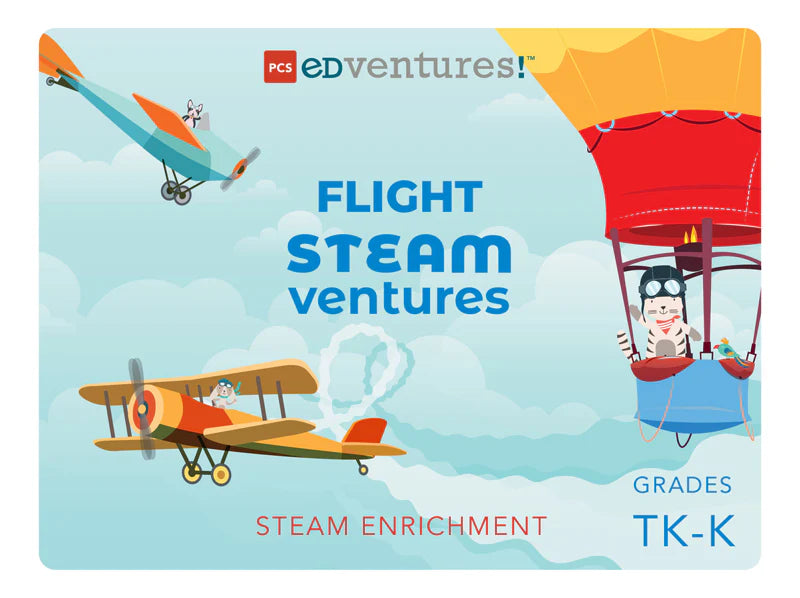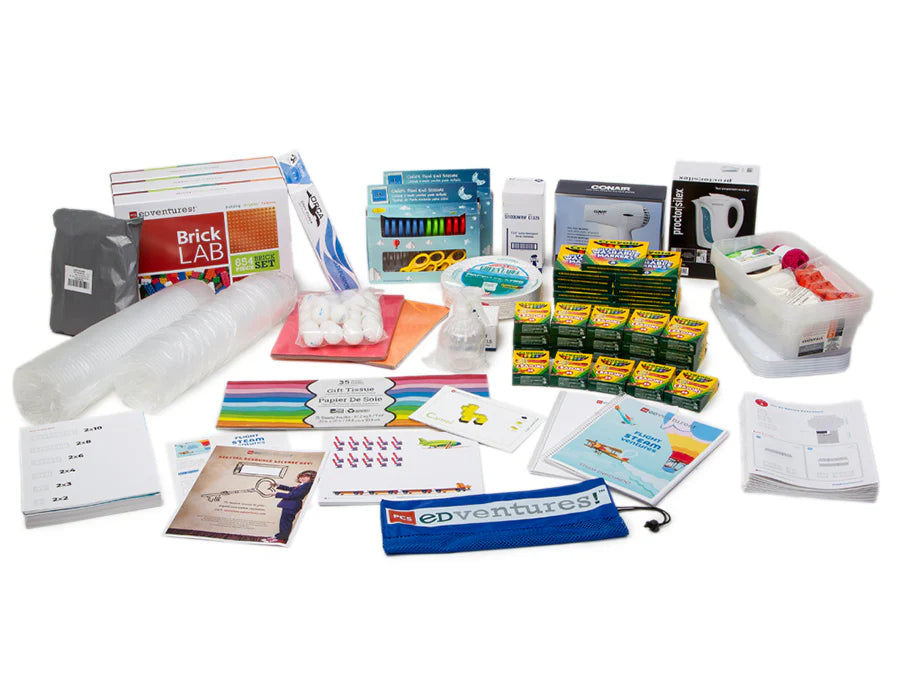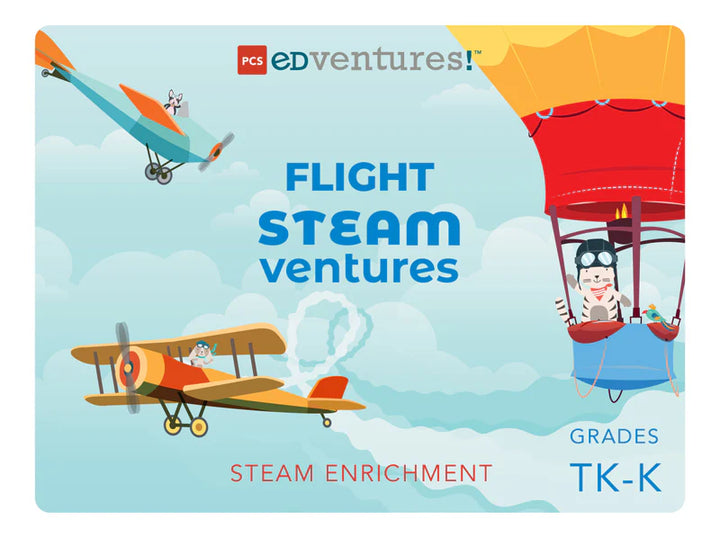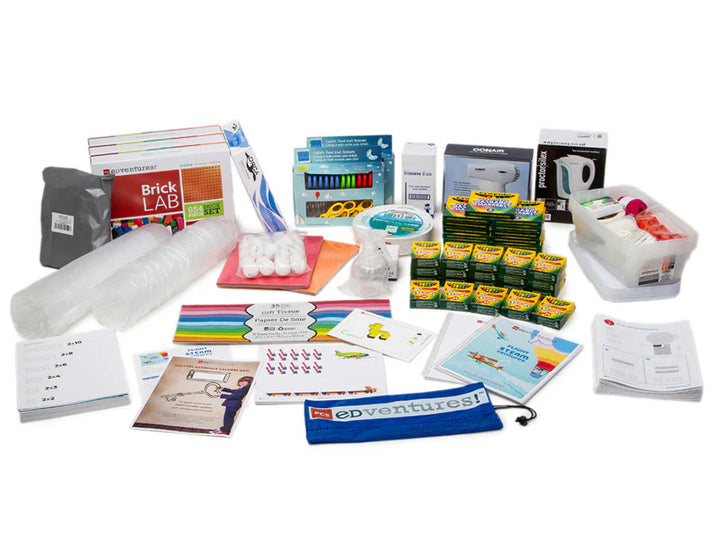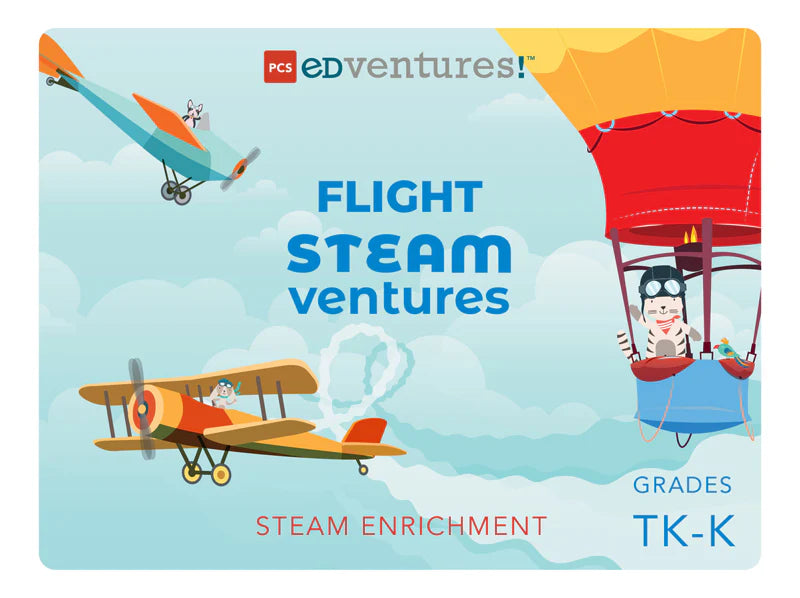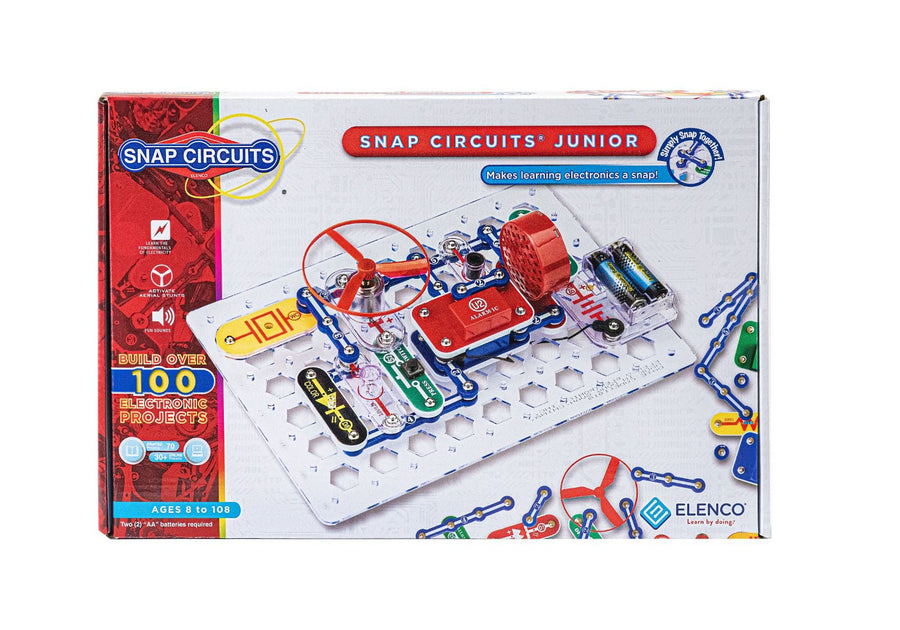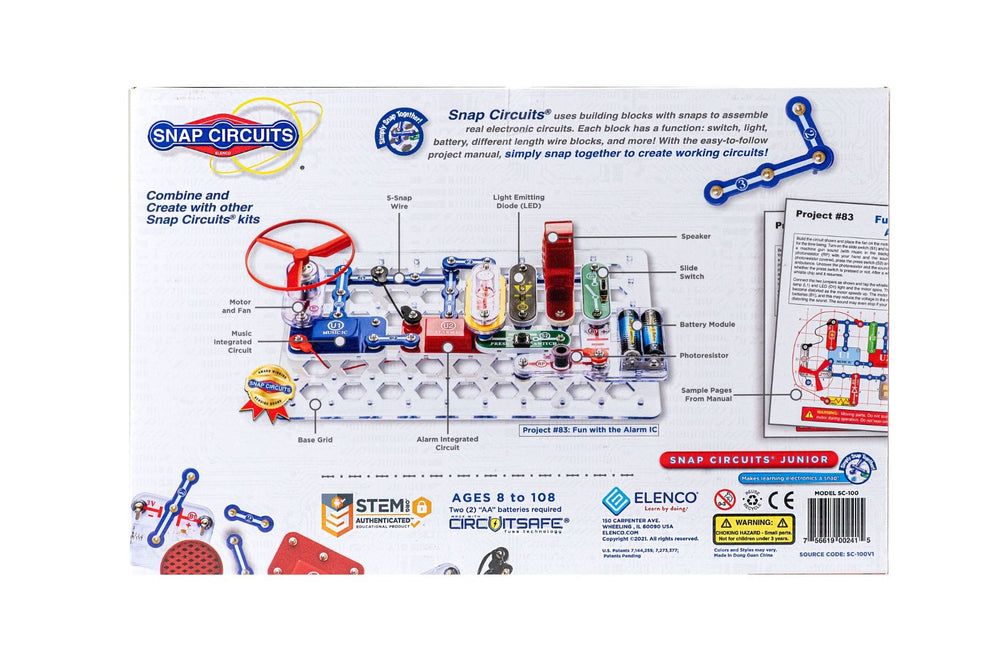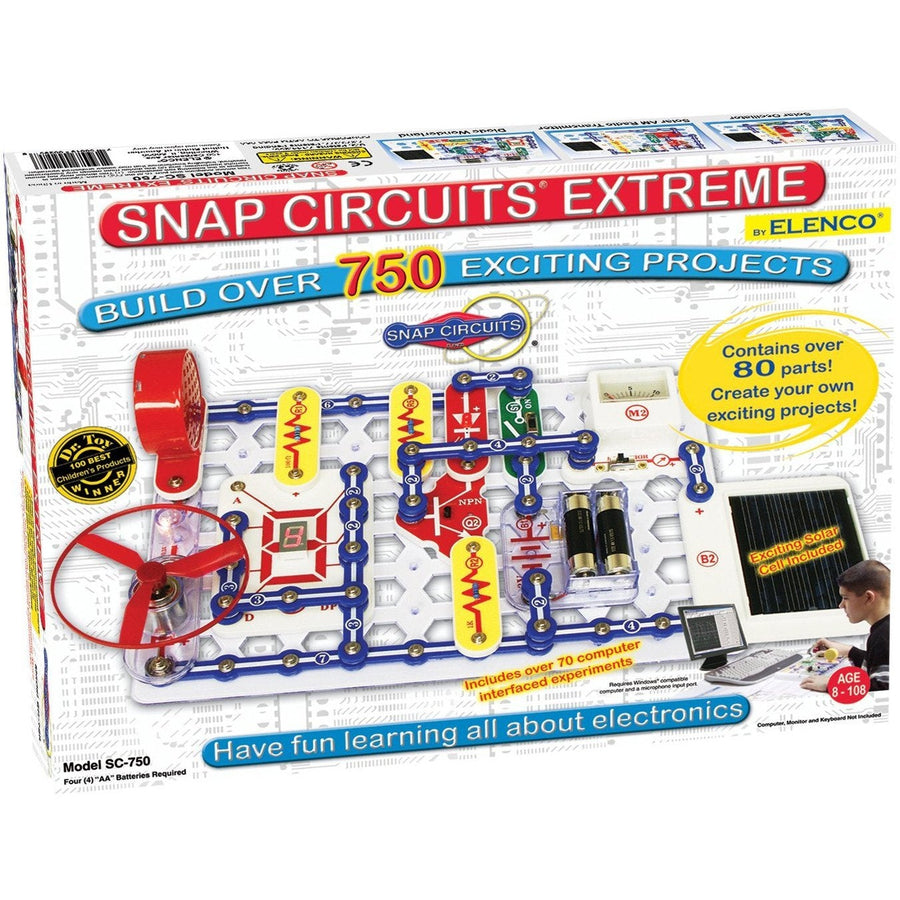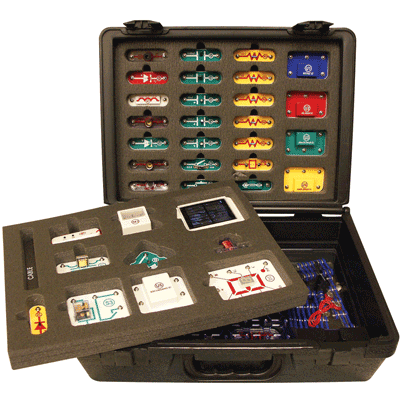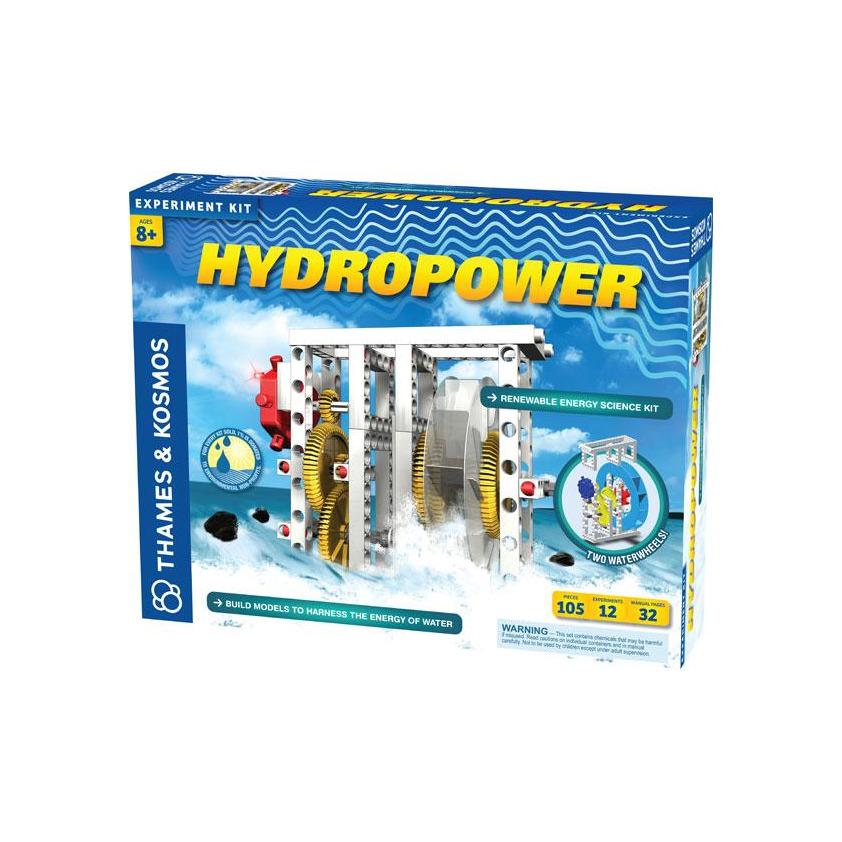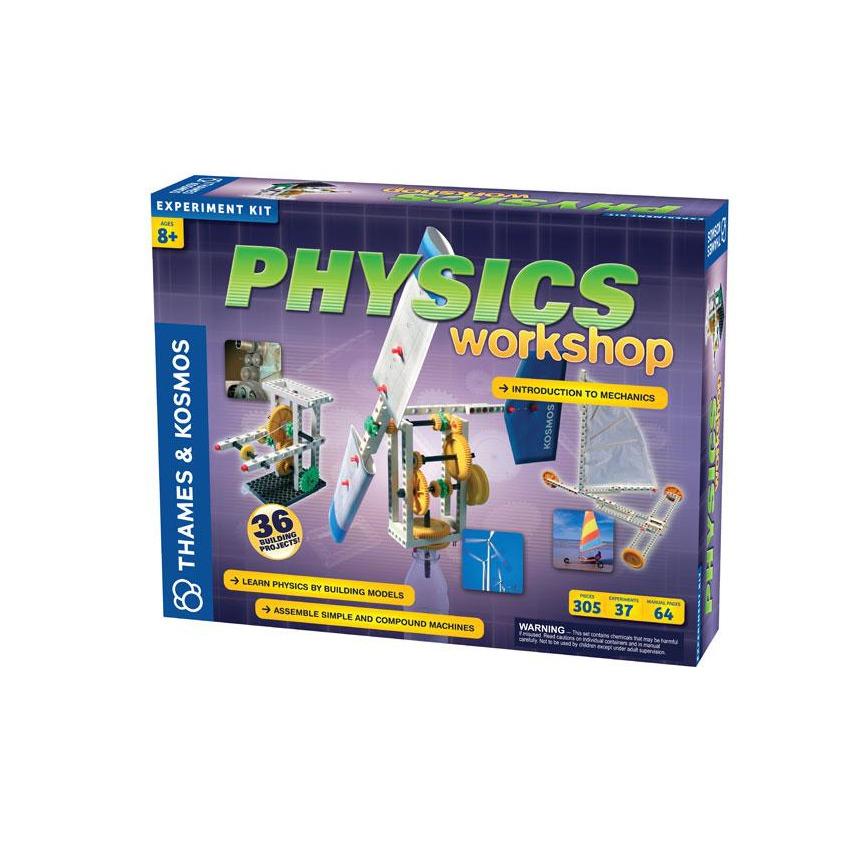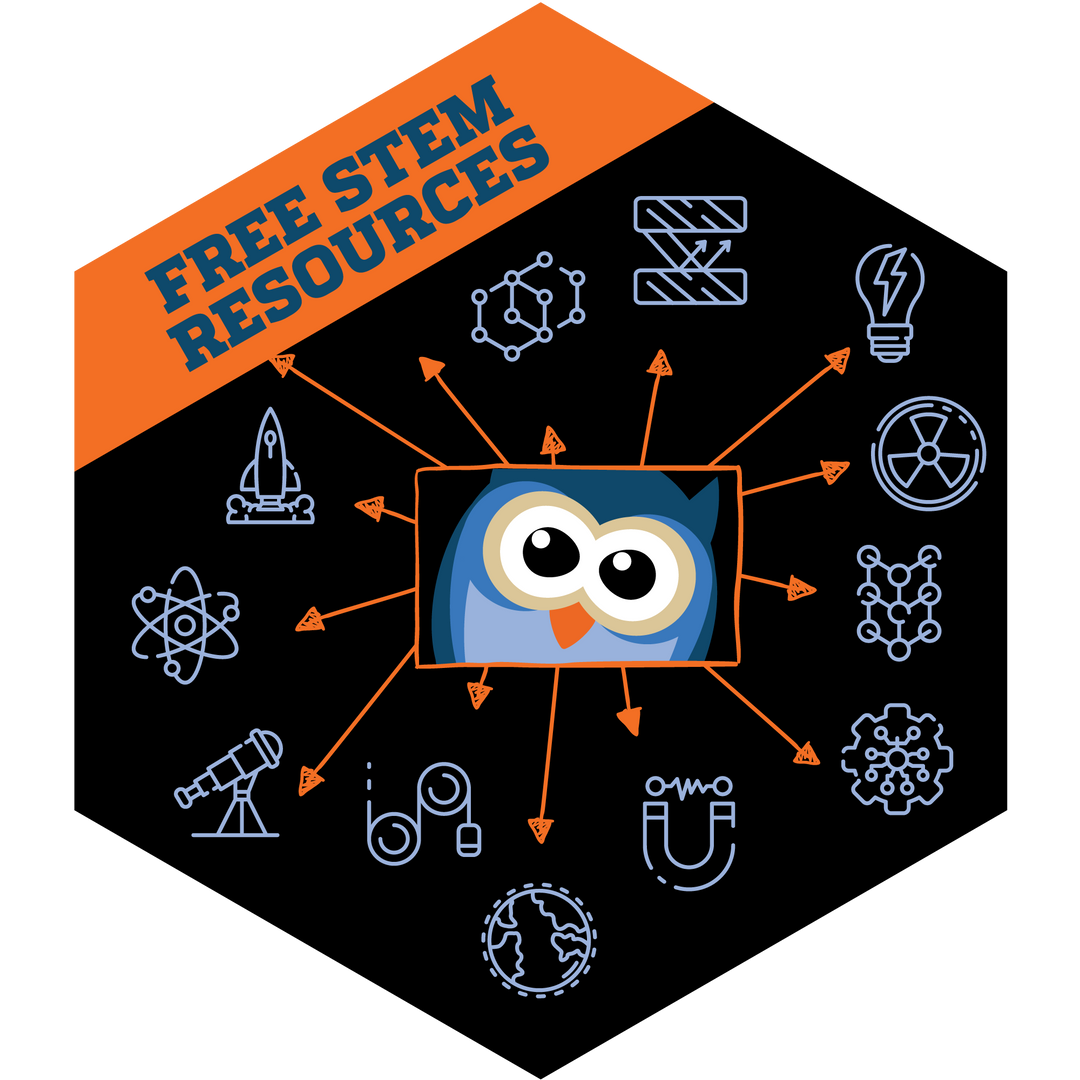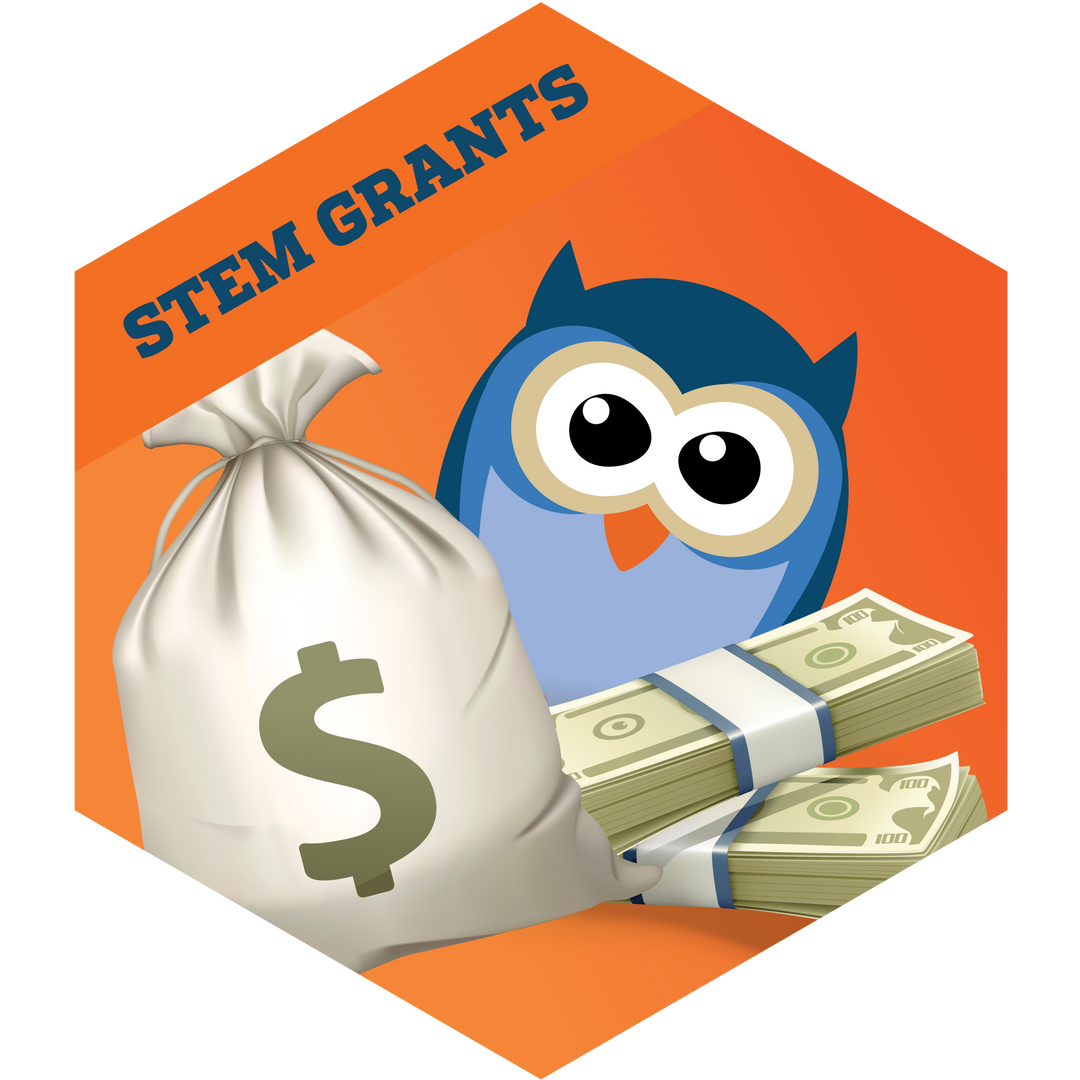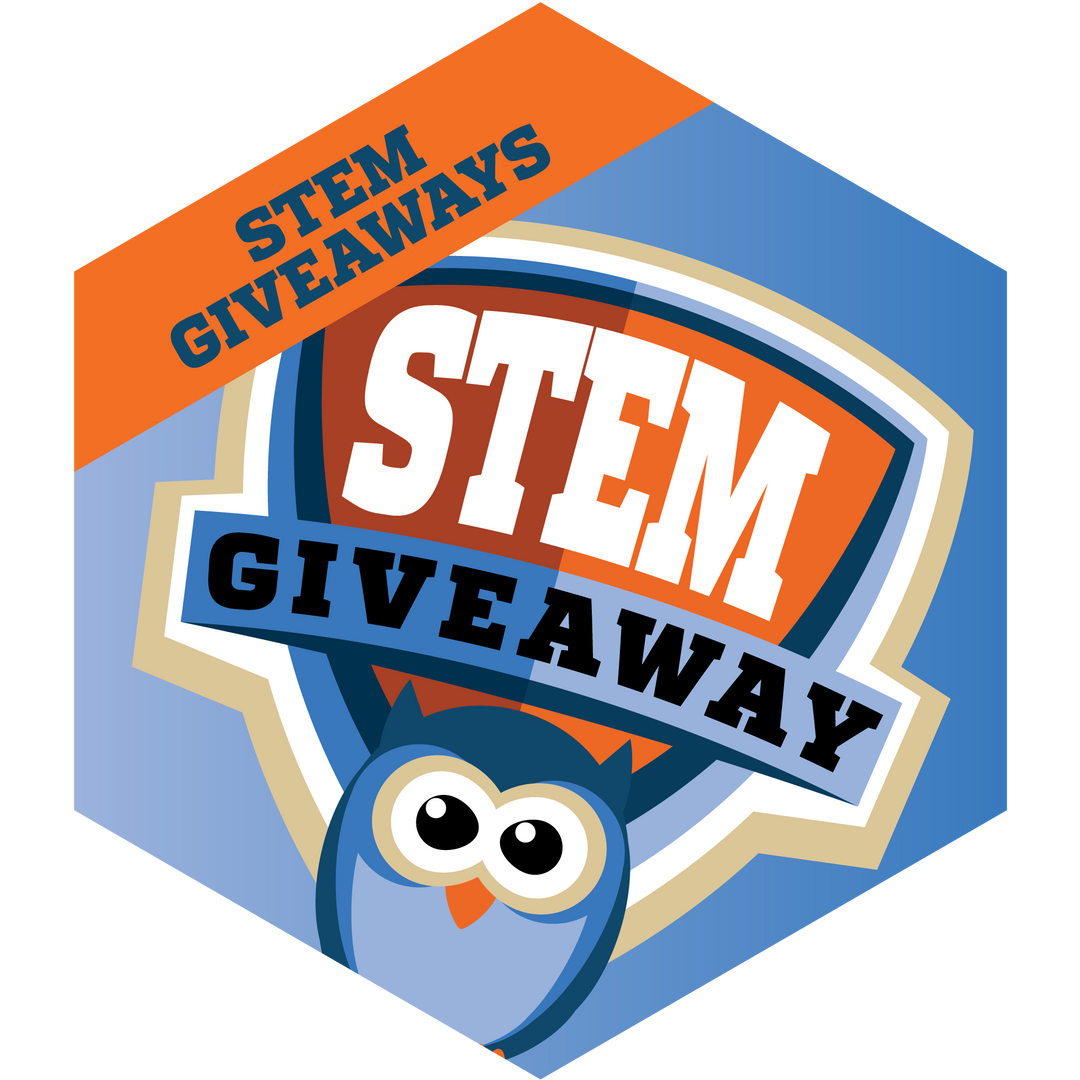Flight STEAMventures
- Grades: TK-K
- Number of Students: Up to 30
- Number of Lessons: 13
- Hours of Content: 12+
- Additional Resources: Curriculum Sample
Highlights:
STEAMventures: Fueling Curiosity, Igniting Innovation
Take flight on an exciting educational journey with our STEAM curriculum tailored for transitional and kindergarten students. Through engaging lessons and extensions, young learners explore the science of flight using hot air balloons and airplanes, employing technology and engineering to model, build and enhance flying machines. Igniting creativity with captivating videos, games and art projects, the curriculum fosters critical thinking and problem-solving skills.
This immersive experience seamlessly integrates foundational math, reading and writing skills, preparing learners for elementary school. Anchored in positive, project-based learning, it provides scaffolding for hands-on activities, sparking a passion for discovery in a dynamic educational environment.
Recommended Setting:
- Summer Camps
- Classrooms
- Out-of-School Time Programs
Curriculum or Lesson Topics:
Subject Targets:
- Physical Science
- Technology
- Engineering Design
- Art/STEAM
- Math
- English Language Arts
Curriculum Topics:
- Brick Sorting
- Alphabet Adventures
- Parts of Hot Air Balloons and Airplanes
- Brick Builds
- Using our Senses
- Engineering Exploration
- Artistic Creations
- Mathematician's Challenge
- Becoming a Pilot
- Science of Flight
- Let’s Go on an Outing!
- Olympics, Challenges and Records
- Flight Festivals
Standards Alignment:
Habits of Mind:
16 thinking habits developed by Art Costa and Bena Kallick to empower students to succeed in a 21st-century learning environment.
- Persisting:
- Managing Impulsivity
- Listening with Understanding and Empathy
- Thinking Flexibly
- Thinking about Thinking (Metacognition)
- Striving for Accuracy
- Questioning and Posing Problems
- Applying Past Knowledge to New Situations
- Thinking and Communicating with Clarity and Precision
- Gathering Data through All Senses
- Creating, Imagining, Innovating
- Responding with Wonderment and Awe
- Taking Responsible Risks
- Finding Humor
- Thinking Interdependently
- Remaining Open to Continuous Learning
21st Century Skills:
A set of widely-applicable abilities essential for success in the information age.
- Communication and Collaboration
- Critical Thinking and Problem Solving
- Information, Media, and Technology Literacy
- Initiative and Self-Direction
- Creativity and Innovation
- Social and Cross-Cultural Skills
- Leadership and Responsibility
- Flexibility and Adaptability
- Productivity and Accountability
© 2019 Battelle for Kids. battelleforkids.org. All Rights Reserved. Battelle for Kids was not involved in the production of this product and does not endorse it.
Next Generation Science Standards:*
- NGSS K-2-ETS1-1: Engineering Design
- NGSS K-2-ETS1-2: Engineering Design
- NGSS K-2-ETS1-3: Engineering Design
- NGSS K-PS2-1: Forces and Motion
- NGSS K-PS2-2. Forces and Motion
- NGSS Core Idea ETS1.A: Defining Engineering Problems
* Next Generation Science Standards and NGSS is a registered trademark of WestEd. Neither WestEd nor the lead states and partners that developed the Next Generation Science Standards were involved in the production of this product, and do not endorse it.
Common Core State Standards for Mathematics:
- CCSS.MATH.CONTENT.K.CC.B.4.B: Understand that the last number name said tells the number of objects counted. The number of objects is the same regardless of their arrangement or the order in which they were counted.
- CCSS.MATH.CONTENT.K.CC.B.4: Understand the relationship between numbers and quantities; connect counting to cardinality.
- CCSS.MATH.CONTENT.K.CC.B.5: Count to answer "how many?" questions about as many as 20 things arranged in a line, a rectangular array, or a circle, or as many as 10 things in a scattered configuration.
- CCSS.MATH.CONTENT.K.CC.C.6: Identify whether the number of objects in one group is greater than, less than, or equal to the number of objects in another group, e.g., by using matching and counting strategies.
- CCSS.MATH.CONTENT.K.G.A.1: Describe objects in the environment using names of shapes, and describe the relative positions of these objects using terms such as above, below, beside, in front of, behind, and next to.
- CCSS.MATH.CONTENT.K.G.A.2: Correctly name shapes regardless of their orientations or overall size.
- CCSS.MATH.CONTENT.K.G.B.4: Analyze and compare two- and three-dimensional shapes, in different sizes and orientations, using informal language to describe their similarities, differences, parts (e.g., number of sides and vertices/"corners") and other attributes (e.g., having sides of equal length).
- CCSS.MATH.CONTENT.K.G.B.5: Model shapes in the world by building shapes from components (e.g., sticks and clay balls) and drawing shapes.
- CCSS.MATH.CONTENT.K.MD.A.1: Describe measurable attributes of objects, such as length or weight.
- CCSS.MATH.CONTENT.K.MD.A.2: Directly compare two objects with a measurable attribute in common, to see which object has "more of"/"less of" the attribute, and describe the difference.
- CCSS.MATH.CONTENT.K.MD.B.3: Classify objects into given categories; count the numbers of objects in each category and sort the categories by count.
- CCSS.MATH.CONTENT.K.OA.A.1: Represent addition and subtraction with objects, fingers, mental images, drawings, sounds (e.g., claps), acting out situations, verbal explanations, expressions, or equations.
- CCSS.MATH.CONTENT.K.OA.A.3: Decompose numbers less than or equal to 10 into pairs in more than one way, e.g., by using objects or drawings, and record each decomposition by a drawing or equation (e.g., 5 = 2 + 3 and 5 = 4 + 1).
- CCSS.MATH.CONTENT.K.OA.A.5: Fluently add and subtract within 5.
© Copyright 2010. National Governors Association Center for Best Practices and Council of Chief State School Officers. All rights reserved.
Common Core State Standards for English Language Arts:
- CCSS.ELA-LITERACY.L.K.1.A: Print many upper- and lowercase letters.
- CCSS.ELA-LITERACY.L.K.5.A: Sort common objects into categories (e.g., shapes, foods) to gain a sense of the concepts the categories represent.
- CCSS.ELA-LITERACY.L.K.5.C: Identify real-life connections between words and their use (e.g., note places at school that are colorful).
- CCSS.ELA-LITERACY.L.K.6: Use words and phrases acquired through conversations, reading and being read to, and responding to texts.
- CCSS.ELA-LITERACY.RF.K.1.A: Follow words from left to right, top to bottom, and page by page.
- CCSS.ELA-LITERACY.RF.K.1.B: Recognize that spoken words are represented in written language by specific sequences of letters.
- CCSS.ELA-LITERACY.RF.K.1.D: Recognize and name all upper-and lowercase letters of the alphabet.
- CCSS.ELA-LITERACY.RF.K.3.A: Demonstrate basic knowledge of one-to-one letter-sound correspondences by producing the primary sound or many of the most frequent sounds for each consonant.
- CCSS.ELA-LITERACY.RF.K.4: Read emergent-reader texts with purpose and understanding.
- CCSS.ELA-LITERACY.SL.K.1.B: Continue a conversation through multiple exchanges.
- CCSS.ELA-LITERACY.SL.K.2: Confirm understanding of a text read aloud or information presented orally or through other media by asking and answering questions about key details and requesting clarification if something is not understood.
- CCSS.ELA-LITERACY.SL.K.4: Describe familiar people, places, things, and events and, with prompting and support, provide additional detail.
- CCSS.ELA-LITERACY.SL.K.5: Add drawings or other visual displays to descriptions as desired to provide additional detail.
- CCSS.ELA-LITERACY.SL.K.6: Speak audibly and express thoughts, feelings, and ideas clearly.
- CCSS.ELA-LITERACY.W.K.3: Use a combination of drawing, dictating, and writing to narrate a single event or several loosely linked events, tell about the events in the order in which they occurred, and provide a reaction to what happened.
© Copyright 2010. National Governors Association Center for Best Practices and Council of Chief State School Officers. All rights reserved.
International Society for Technology in Education:
- 1.3.c Curate Information: Students curate information from digital resources using a variety of tools and methods to create collections of artifacts that demonstrate meaningful connections or conclusions.
- 1.3.d Explore Real-World Issues: Students build knowledge by actively exploring real-world issues and problems, developing ideas and theories, and pursuing answers and solutions.
- 1.4.a Design Process: Students know and use a deliberate design process for generating ideas, testing theories, creating innovative artifacts or solving authentic problems.
- 1.4.c Prototypes: Students develop, test and refine prototypes as part of a cyclical design process.
- 1.6.b Original and Remixed Works: Students create original works or responsibly repurpose or remix digital resources into new creations.
- 1.6.c Models and Visualizations Students: communicate complex ideas clearly and effectively by creating or using a variety of digital objects such as visualizations, models or simulations.
- 1.6.c Models and Visualizations: Students communicate complex ideas clearly and effectively by creating or using a variety of digital objects such as visualizations, models or simulations.
ISTE Standards for Students, ©2016, ISTE® (International Society for Technology in Education), iste.org. All rights reserved. ISTE was not involved in the production of this product and does not endorse it.
National Core Arts Standards:
- DA:Cr2.1.PK: Engage in dance experiences moving alone or with a partner.
- DA:Cr3.1.PK: Respond to suggestions for changing movement through guided improvisational experiences.
- DA:Pr4.1.PK: Identify and demonstrate directions for moving the body in general space (for example, forward, backwards, sideways, up, down and turning) and finding and returning to a place in space.
- VA:Cn10.1.Ka: Create art that tells a story about a life experience.
- VA:Cn10.1.Pka: Explore the world using descriptive and expressive words and art-making.
- VA:Cn11.1.Ka: Identify a purpose of an artwork.
- VA:Cr1.1.Ka: Engage in exploration and imaginative play with materials.
- VA:Cr1.1.Ka: Use various materials and tools to create artworks.
- VA:Cr1.2.PKa: Engage in self directed, creative making.
- VA:Cr1.K: Generate and conceptualize artistic ideas and work.
- VA:Cr2.1.Ka: Through experimentation, build skills in various media and approaches to artmaking.
- VA:Cr2.1.PKa: Use a variety of artmaking tools.
- VA:Cr2.2.PKa: Share materials with others.
- VA:Cr2.3.Ka: Create art that represents natural and constructed environments.
- VA:Cr3.1.PKa: Share and talk about personal artwork.
- VA:Re.7.2.Ka: Describe what an image represents.
National Core Arts Standards © 2015 National Coalition for Core Arts Standards. Rights administered by Young Audiences, Inc. New York, NY. https://www.nationalartsstandards.org
What's Included:
Each Lesson Includes:
- Schedule
- Opening & Closing Discussion
- Step-By-Step Activity Instructions
- Topic Background Information & Vocabulary
- Materials List
Complete Program Includes:
- Instructor Guide: 1
- Sets of Build Plans: 6
- Sets of Consumable Student Pages: 30
- Sets of Reusable Student Pages: 10
- BrickLAB Charade Card Set: 1
- Large Storage Bins with Lids: 2
- Mesh Bag (for cleaning bricks): 1
- Ping Pong Balls: 24
- Balloons: 25
- Sets of BrickLAB Bricks: 3
- Brick Separator (for deconstructing builds): 1
- Coffee Filters: 100
- Clear, Round Containers (50 pack): 2
- Small Storage Containers with Lids: 6
- Crayons (24 pack): 20
- Set of Food Coloring (4 pack): 1
- Geometric Die Cut Shapes (25+ pack): 1
- Glue Sticks: 30
- Golf Pencils (50+ pack):1
- Hair Dryer: 1
- Washable Markers, Broad Line (8 pack): 15
- White Copy Paper (500 pack): 1
- Construction Paper (50 sheets): 2
- Tissue Paper (24 sheets): 1
- Paper Plates: 100
- Parachute: 1
- Scissors: 30
- Spray Bottle: 1
- Straws: 250
- Roll of Masking Tape: 1
- Electric Tea Kettle: 1
- Yarn Mini-skein: 1
- Access to the Digital Resource Portal


